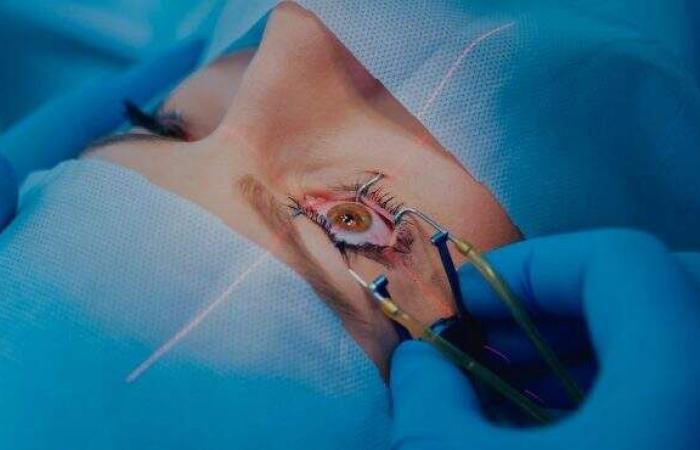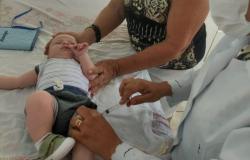
A discovery by researchers from the Department of Ophthalmology at Harvard Medical School published in The American Journal of Pathology reveals that the administration of the neuropeptide a-melanocyte-stimulating hormone (a-MSH) prevents corneal edema and opacity, in addition to limiting death of cells in its inner layer, known as endothelium. The researchers say the study highlights the therapeutic potential of this hormone for a wide range of ocular disorders, such as Fuchs Dystrophy, a common disease and indication for corneal transplantation, as well as other disorders of the corneal endothelium that lead to corneal swelling. .
According to ophthalmologist Leôncio Queiroz Neto, president of the Penido Burnier Institute in Campinas, the discovery is a major advance because to date there are no other therapies capable of recovering corneal endothelial cells. Worse: they are responsible for transparency and regulate the fluid balance of the eye lens.
The specialist explains that several conditions can opacify the cornea and lead to transplantation. “It is important to recognize these factors to adopt preventative measures when possible,” he says. The main ones listed by the doctor are:
– Keratoconus: It is the most prevalent risk factor. A survey carried out in Penido Burnier shows that ¼ of patients do not have regular ophthalmological monitoring. This is why they are at greater risk of corneal transplantation, says Queiroz Neto. The condition, he explains, causes structural changes in the cornea, thinning, protrusion and dilation of the central portion. Because it is progressive, it accounts for 2 out of every 3 transplants in Brazil. The recommendation of the International Keratoconus Academy is quarterly exams until the age of 18, a period in which progression is faster. The ophthalmologist explains that at this stage the patient can undergo crosslinking, an outpatient surgery that stops the progression. The technique reinforces the cornea’s collagen bonds through the application of ultraviolet radiation combined with vitamin B2, he says.
– Genetics: The ophthalmologist emphasizes that corneal dystrophies, such as Fuchs dystrophy, have a genetic predisposition. If there is a family history of these conditions, the risk of needing a cornea transplant increases.
– Eye trauma: Worldwide, half of unilateral corneal blindness is caused by mechanical or chemical injuries. Queiroz Neto highlights that corneal scars and edema are the two main corneal diseases that lead to significant vision loss, with the latter being the indication for more than two thirds of corneal transplant procedures.
– Incorrect use of contact lenses: Poor hygiene, use during sleep, expired lenses, keeping the same case for more than 3 months, poorly fitted lenses, increase the risk of corneal opacification and the need for a corneal transplant.
– Prolonged use of topical corticosteroids: to treat eye conditions increase the risk of developing glaucoma and, therefore, damage to endothelial cells.
– Infectious diseases: Eye infections, such as ocular herpes, can harm the integrity of endothelial cells.
– Environmental factors: Prolonged exposure to ultraviolet (UV) radiation without adequate protection contributes to damage to endothelial cells.
Queiroz Neto emphasizes that one or more risk factors does not guarantee the development of damage to endothelial cells and the interaction between these factors may vary from person to person.
Prevention
– Regular eye exams: It is crucial to detect any problems with endothelial cells or other eye conditions early. Regular exams can help monitor eye health and intervene early if necessary.
– Eye protection: Wearing glasses when practicing sports or activities that present a risk of eye trauma can help prevent injuries that could affect endothelial cells.
– Contact lens care: If you wear contact lenses, it is important to follow your ophthalmologist’s instructions regarding proper use, cleaning and replacement of lenses. Poor hygiene or inappropriate prolonged use can increase the risk of corneal complications.
– Avoid self-diagnosis and self-medication: If you notice eye symptoms or changes in vision, it is essential to seek the advice of an ophthalmologist rather than trying to diagnose or treat the situation on your own.
– Control of systemic conditions: Keeping underlying medical conditions, such as diabetes and hypertension, under control will help prevent ocular complications that can affect endothelial cells.
– Avoid smoking: Smoking is associated with a number of eye problems, including an increased risk of diseases that can affect the cornea. Quitting smoking can contribute to eye health.
Tags: Discovered therapy capable restoring layer cornea eliminating transplant continues grow Brazil
--




